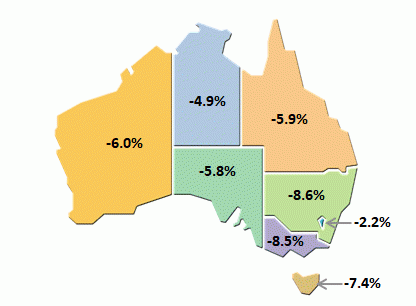COE and profits share of total factor income, seasonally adjusted
[["Sep-59","Dec-59","Mar-60","Jun-60","Sep-60","Dec-60","Mar-61","Jun-61","Sep-61","Dec-61","Mar-62","Jun-62","Sep-62","Dec-62","Mar-63","Jun-63","Sep-63","Dec-63","Mar-64","Jun-64","Sep-64","Dec-64","Mar-65","Jun-65","Sep-65","Dec-65","Mar-66","Jun-66","Sep-66","Dec-66","Mar-67","Jun-67","Sep-67","Dec-67","Mar-68","Jun-68","Sep-68","Dec-68","Mar-69","Jun-69","Sep-69","Dec-69","Mar-70","Jun-70","Sep-70","Dec-70","Mar-71","Jun-71","Sep-71","Dec-71","Mar-72","Jun-72","Sep-72","Dec-72","Mar-73","Jun-73","Sep-73","Dec-73","Mar-74","Jun-74","Sep-74","Dec-74","Mar-75","Jun-75","Sep-75","Dec-75","Mar-76","Jun-76","Sep-76","Dec-76","Mar-77","Jun-77","Sep-77","Dec-77","Mar-78","Jun-78","Sep-78","Dec-78","Mar-79","Jun-79","Sep-79","Dec-79","Mar-80","Jun-80","Sep-80","Dec-80","Mar-81","Jun-81","Sep-81","Dec-81","Mar-82","Jun-82","Sep-82","Dec-82","Mar-83","Jun-83","Sep-83","Dec-83","Mar-84","Jun-84","Sep-84","Dec-84","Mar-85","Jun-85","Sep-85","Dec-85","Mar-86","Jun-86","Sep-86","Dec-86","Mar-87","Jun-87","Sep-87","Dec-87","Mar-88","Jun-88","Sep-88","Dec-88","Mar-89","Jun-89","Sep-89","Dec-89","Mar-90","Jun-90","Sep-90","Dec-90","Mar-91","Jun-91","Sep-91","Dec-91","Mar-92","Jun-92","Sep-92","Dec-92","Mar-93","Jun-93","Sep-93","Dec-93","Mar-94","Jun-94","Sep-94","Dec-94","Mar-95","Jun-95","Sep-95","Dec-95","Mar-96","Jun-96","Sep-96","Dec-96","Mar-97","Jun-97","Sep-97","Dec-97","Mar-98","Jun-98","Sep-98","Dec-98","Mar-99","Jun-99","Sep-99","Dec-99","Mar-00","Jun-00","Sep-00","Dec-00","Mar-01","Jun-01","Sep-01","Dec-01","Mar-02","Jun-02","Sep-02","Dec-02","Mar-03","Jun-03","Sep-03","Dec-03","Mar-04","Jun-04","Sep-04","Dec-04","Mar-05","Jun-05","Sep-05","Dec-05","Mar-06","Jun-06","Sep-06","Dec-06","Mar-07","Jun-07","Sep-07","Dec-07","Mar-08","Jun-08","Sep-08","Dec-08","Mar-09","Jun-09","Sep-09","Dec-09","Mar-10","Jun-10","Sep-10","Dec-10","Mar-11","Jun-11","Sep-11","Dec-11","Mar-12","Jun-12","Sep-12","Dec-12","Mar-13","Jun-13","Sep-13","Dec-13","Mar-14","Jun-14","Sep-14","Dec-14","Mar-15","Jun-15","Sep-15","Dec-15","Mar-16","Jun-16","Sep-16","Dec-16","Mar-17","Jun-17","Sep-17","Dec-17","Mar-18","Jun-18","Sep-18","Dec-18","Mar-19","Jun-19","Sep-19","Dec-19","Mar-20","Jun-20"],[[49.799999999999997],[50],[50.899999999999999],[50.899999999999999],[51.200000000000003],[51.700000000000003],[51.5],[52.5],[52.899999999999999],[52.600000000000001],[52.200000000000003],[51.799999999999997],[51.600000000000001],[51.299999999999997],[51.5],[51.700000000000003],[50.200000000000003],[51.100000000000001],[50.600000000000001],[51],[51.399999999999999],[52.600000000000001],[52.200000000000003],[52.600000000000001],[53.899999999999999],[54],[55],[54.200000000000003],[53.899999999999999],[53.200000000000003],[52.600000000000001],[53.5],[54.399999999999999],[53.600000000000001],[54.100000000000001],[54.200000000000003],[53.200000000000003],[53.200000000000003],[53.799999999999997],[53.899999999999999],[53.100000000000001],[53],[53.700000000000003],[53.100000000000001],[54.399999999999999],[55.5],[56.600000000000001],[56.299999999999997],[55.899999999999999],[55.899999999999999],[56.700000000000003],[56.5],[56.399999999999999],[56],[55.200000000000003],[56.299999999999997],[54.5],[56.299999999999997],[57.899999999999999],[59.100000000000001],[62.700000000000003],[62.399999999999999],[62.799999999999997],[61.200000000000003],[62.299999999999997],[62],[61.600000000000001],[61.299999999999997],[60.899999999999999],[60.5],[60.700000000000003],[61.299999999999997],[61],[61.5],[61.100000000000001],[60.600000000000001],[58.899999999999999],[58.100000000000001],[58.5],[57.600000000000001],[57.299999999999997],[57.299999999999997],[57.200000000000003],[56.899999999999999],[58.299999999999997],[57.600000000000001],[57.799999999999997],[58.899999999999999],[58],[58.700000000000003],[60.100000000000001],[60.399999999999999],[61.899999999999999],[61.399999999999999],[60.799999999999997],[59.200000000000003],[57.100000000000001],[57.399999999999999],[56.399999999999999],[57.200000000000003],[57.5],[57.399999999999999],[56.700000000000003],[56.700000000000003],[55.899999999999999],[57.299999999999997],[57.100000000000001],[56.799999999999997],[57.600000000000001],[56.100000000000001],[55.799999999999997],[55.200000000000003],[55.100000000000001],[54.799999999999997],[54.100000000000001],[54.299999999999997],[53.299999999999997],[54.200000000000003],[53.899999999999999],[53.700000000000003],[54.5],[54.5],[55.100000000000001],[55.700000000000003],[56.200000000000003],[54.700000000000003],[56.600000000000001],[56],[55.899999999999999],[55.899999999999999],[55],[55.399999999999999],[55.399999999999999],[54.399999999999999],[54.399999999999999],[54],[54],[53.899999999999999],[54.200000000000003],[54.899999999999999],[54.299999999999997],[54.5],[54.899999999999999],[55.299999999999997],[55],[55.200000000000003],[55],[55.299999999999997],[55.899999999999999],[56.100000000000001],[56.100000000000001],[55.799999999999997],[55.100000000000001],[55],[54.899999999999999],[55.100000000000001],[55.799999999999997],[55.299999999999997],[55.200000000000003],[56.100000000000001],[55.5],[55.299999999999997],[54.600000000000001],[54.600000000000001],[54.600000000000001],[55.700000000000003],[55.600000000000001],[56.200000000000003],[55],[54.299999999999997],[54.5],[54.100000000000001],[54.5],[54.299999999999997],[54.700000000000003],[55.100000000000001],[54.399999999999999],[54],[54.299999999999997],[54.200000000000003],[54.299999999999997],[54.200000000000003],[54],[54.299999999999997],[53.700000000000003],[53.5],[53.700000000000003],[54],[53.200000000000003],[53.700000000000003],[53.600000000000001],[54.200000000000003],[54.299999999999997],[54.100000000000001],[53.700000000000003],[53.299999999999997],[51.799999999999997],[51.899999999999999],[51.5],[52.200000000000003],[52.799999999999997],[52.399999999999999],[52.399999999999999],[51.700000000000003],[52.100000000000001],[52],[52.899999999999999],[52.100000000000001],[51.700000000000003],[52.100000000000001],[53.299999999999997],[53.299999999999997],[53.100000000000001],[53.5],[53.399999999999999],[53.100000000000001],[53.200000000000003],[53],[53.100000000000001],[53.399999999999999],[53.799999999999997],[53.700000000000003],[53.799999999999997],[54.100000000000001],[54.200000000000003],[54.600000000000001],[55.200000000000003],[54.600000000000001],[54.200000000000003],[52.200000000000003],[51.700000000000003],[52.399999999999999],[52.600000000000001],[52.799999999999997],[52.399999999999999],[52.299999999999997],[52.299999999999997],[52],[52],[52],[52],[52.5],[52.5],[49.399999999999999]],[[18.5],[19],[19.300000000000001],[18.5],[20],[19],[17.5],[16.800000000000001],[17.600000000000001],[18.600000000000001],[19.800000000000001],[19.699999999999999],[19.399999999999999],[19.5],[20.199999999999999],[19.300000000000001],[20.300000000000001],[20],[20.399999999999999],[20.600000000000001],[20.399999999999999],[20.199999999999999],[20.100000000000001],[20.899999999999999],[20.100000000000001],[19.800000000000001],[19.100000000000001],[19.600000000000001],[19.300000000000001],[19.800000000000001],[20.100000000000001],[19.899999999999999],[20],[20.199999999999999],[21.300000000000001],[20.800000000000001],[21.100000000000001],[20.5],[21.199999999999999],[21.300000000000001],[21.699999999999999],[21.800000000000001],[21.800000000000001],[22],[22.100000000000001],[21.100000000000001],[20.699999999999999],[20.399999999999999],[20.899999999999999],[20.800000000000001],[20.100000000000001],[20.300000000000001],[20.5],[20.899999999999999],[21.100000000000001],[20.800000000000001],[20.399999999999999],[19.399999999999999],[19.100000000000001],[16.399999999999999],[16.399999999999999],[17.199999999999999],[16.300000000000001],[18.399999999999999],[16.899999999999999],[17.199999999999999],[17],[18.300000000000001],[18.600000000000001],[18.300000000000001],[18],[17.800000000000001],[17.899999999999999],[17.300000000000001],[17.699999999999999],[18.300000000000001],[18.199999999999999],[18.699999999999999],[18.699999999999999],[18.300000000000001],[19],[19.399999999999999],[19.100000000000001],[19.300000000000001],[18.699999999999999],[19.600000000000001],[20],[19.300000000000001],[20],[19.399999999999999],[18.399999999999999],[18.600000000000001],[18.300000000000001],[19.300000000000001],[19.600000000000001],[20.899999999999999],[21.300000000000001],[21.5],[22.600000000000001],[22.199999999999999],[22],[22],[22.399999999999999],[22.5],[23.399999999999999],[21.199999999999999],[21.800000000000001],[21.800000000000001],[21.300000000000001],[22.600000000000001],[23.100000000000001],[23.699999999999999],[24.199999999999999],[24.600000000000001],[24.399999999999999],[24.699999999999999],[25],[24.399999999999999],[24.199999999999999],[24.5],[24.199999999999999],[23.800000000000001],[23.399999999999999],[22.699999999999999],[22.399999999999999],[23.300000000000001],[22.199999999999999],[21.5],[22.800000000000001],[22.899999999999999],[23.699999999999999],[23.399999999999999],[23],[24.399999999999999],[24.399999999999999],[25.5],[25.199999999999999],[25.300000000000001],[25.600000000000001],[24.699999999999999],[25.5],[25.399999999999999],[25.300000000000001],[24.899999999999999],[25.300000000000001],[25.300000000000001],[25.300000000000001],[24.899999999999999],[24.600000000000001],[23.800000000000001],[23.600000000000001],[24],[24.300000000000001],[24.100000000000001],[24.600000000000001],[24.199999999999999],[24.100000000000001],[24.600000000000001],[24.899999999999999],[24],[24.100000000000001],[25],[25.899999999999999],[26.300000000000001],[26.399999999999999],[25.699999999999999],[25.5],[24.399999999999999],[24.899999999999999],[24.699999999999999],[24.699999999999999],[24.699999999999999],[25.699999999999999],[26.300000000000001],[26.100000000000001],[26.199999999999999],[26.199999999999999],[26.199999999999999],[25.800000000000001],[25.399999999999999],[25.399999999999999],[25.600000000000001],[25.899999999999999],[25.5],[26.5],[27.100000000000001],[27],[26.800000000000001],[27.699999999999999],[27.899999999999999],[27.899999999999999],[27.100000000000001],[26.699999999999999],[26.600000000000001],[26.600000000000001],[27.300000000000001],[29.399999999999999],[28.800000000000001],[29.399999999999999],[28.100000000000001],[27.300000000000001],[27.600000000000001],[27.5],[29],[28.600000000000001],[28.699999999999999],[27.600000000000001],[28.699999999999999],[29.300000000000001],[28.800000000000001],[27.899999999999999],[27.800000000000001],[27.800000000000001],[27.399999999999999],[27.399999999999999],[27.699999999999999],[27.600000000000001],[27.800000000000001],[27.5],[26.899999999999999],[26],[25.800000000000001],[25.5],[25.100000000000001],[24.899999999999999],[24.899999999999999],[24.600000000000001],[24.600000000000001],[25.199999999999999],[27.199999999999999],[27.800000000000001],[27.300000000000001],[27.399999999999999],[27.300000000000001],[27.800000000000001],[27.699999999999999],[28.100000000000001],[28.600000000000001],[28.899999999999999],[29.199999999999999],[29.399999999999999],[28.899999999999999],[29],[31.100000000000001]]]
[]
[{"axis_id":"0","tick_interval":"24","axis_min":"","axis_max":"","axis_title":"","precision":-1,"axis_units":"","tooltip_units":"","table_units":"","data_unit_prefix":"","data_unit_suffix":"","reverse_axis":false}][{"axis_id":"0","tick_interval":"10","axis_min":"0","axis_max":"70","axis_title":"%","precision":"1","table_units":"(%)","tooltip_units":"(%)","axis_units":"","data_unit_prefix":"","data_unit_suffix":"","reverse_axis":false}]